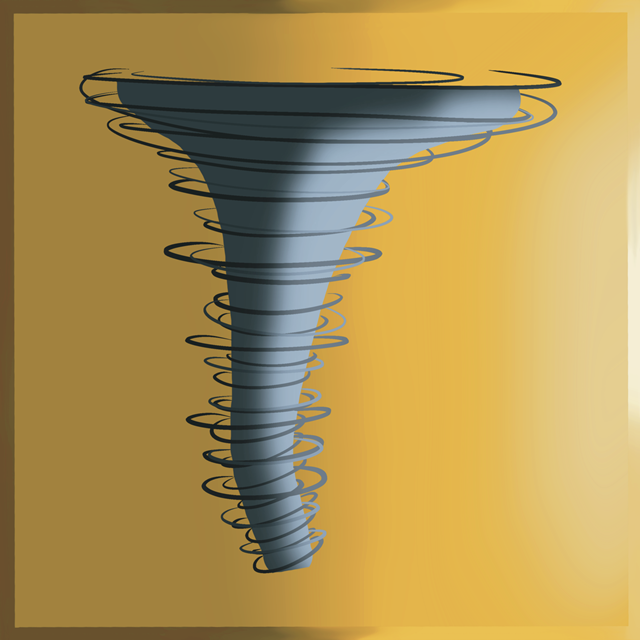Definition:
A “tornado” is a rapidly rotating column of air that extends from a thunderstorm to the ground. It is characterized by its funnel shape and intense winds, which can cause significant damage to anything in its path.
Etymology:
The word “tornado” comes from the Spanish word “tornar,” meaning “to turn.” This reflects the swirling, rotational nature of the phenomenon. The term was adopted into English in the 16th century.
Description:
Tornadoes form under specific atmospheric conditions, often during severe thunderstorms. Key factors include strong wind shear, instability, and a triggering mechanism such as a cold front.
A tornado typically has a funnel-shaped cloud that descends from a larger storm system. The base of the funnel is where the most intense winds occur.
Tornadoes vary widely in strength, with the Enhanced Fujita (EF) scale used to classify them based on the damage they cause, ranging from EF0 (weak) to EF5 (devastating).
Symbolism:
Tornadoes symbolize chaos, destruction and often violence. They are often used in literature and media to represent sudden, catastrophic change.
The rotation of a tornado makes it a hypnotic symbol. Additionally, the tendency of a tornado to destroy what humans have built, along with its rotating nature, makes it a go symbol.
Religion:
Tornadoes are not specifically mentioned in ancient religious texts, but similar natural phenomena and their impacts are often described as a punishment from God:
- In the Bible, in Job, chapter 38, verse 1, it says: “Then the Lord spoke to Job out of the storm,” highlighting God’s presence in powerful natural events.
- The Quran also references destructive winds and storms as manifestations of divine power and punishment. Surah Al-Hijr (15:72) speaks of “a terrible blast” as a form of divine retribution.
Many ancient cultures interpreted tornadoes and other severe weather events as acts of gods or supernatural forces. For example, in Norse mythology, Thor was the god of thunder, lightning, and storms.
